Navigating business financing options can be challenging when you face time-sensitive decisions. You must weigh the advantages and drawbacks of commercial lenders versus traditional banks to secure the capital your company needs.
Commercial lenders often provide faster approval and more adaptable financing terms, empowering you to seize opportunities swiftly. They can offer creative solutions when conventional banks impose rigid lending criteria, effectively.
For expert guidance, visit DFW Hard Money - Commercial Lenders who understand that your business deserves tailored funding solutions. They consistently provide insights that refine your decision-making process and drive growth.
Wells Fargo Lending
Exploring Wells Fargo lending options reveals both traditional bank benefits and unique loan incentives that cater specifically to established customers and growing businesses alike.
- NATIONAL BANKS: It creates exclusive offers for existing customers, including low-down payment loans and closing cost incentives that enhance your borrowing experience.
- COMPLETE SUITE: It offers a range of financial products in one place, combining online loan management with convenient branch locations to serve your needs.
- EVALUATING LENDERS: It helps you understand key differences such as geographical service area, product variety, and total assets compared to other lenders.
- TYPES OF LENDERS: It distinguishes between national banks, regional banks, credit unions, mortgage brokers, and online-only lenders for more clarity.
This clear comparison helps you recognize the benefits and drawbacks, making your decision informed based on your business requirements and personal financial situation.
BlueVine Lender Options
Your exploration into BlueVine lending introduces accessible credit requirements and faster funding speeds that complement traditional bank offerings in innovative ways.
Credit Requirements
BlueVine accepts lower credit scores, beginning at 625, easing access for businesses with fair credit and opening opportunities otherwise unavailable.
Loan Amounts
BlueVine provides lines of credit up to $250,000, which suits smaller businesses looking for agile funding without the extensive limits of larger banks.
Term Lengths and Interest Rates
It offers term options of 6 or 12 months with simple interest starting at 6.20%, allowing you to choose flexible terms that match your operational cash flow.
Funding Speed and Revenue Requirements
Fast funding often within 24 hours and clear revenue thresholds help you meet urgent needs, making BlueVine an attractive alternative to slower traditional methods.
This approach combines accessibility with speed, ensuring you can quickly secure funds while balancing credit and revenue requirements for your business success.
Chase Approval Process
Navigating Chase's approval process provides insights into both direct lending and specialized mortgage solutions that accommodate varied financial profiles and needs.
- DIRECT LENDERS: It originates, processes, and funds loans, delivering competitive rates and flexible terms not always seen in traditional channels.
- MORTGAGE BROKERS: It acts as an intermediary between you and multiple lenders, increasing the likelihood of tailored mortgage solutions.
- FLEXIBLE BENEFITS: It offers competitive interest rates, personalized service, and a more lenient approach to borrowers with challenging credit situations.
- APPROVAL TIPS: It encourages preparation with documentation and credit score improvements to ensure a smoother pre-approval process for first-time buyers.
This outline underscores the essential steps and advantages available during the mortgage application process, empowering you to secure optimal loan terms with confidence.
OnDeck Qualification Criteria
Understanding OnDeck's qualification criteria uncovers faster assessment processes and lower revenue requirements that bridge the gap between efficiency and accessibility.
Time in Business and Revenue Expectations
It requires one year in business and a minimum annual revenue of $100,000, setting more accessible thresholds than many traditional bank standards.
Credit Score Flexibility
With a personal FICO score requirement starting at 625, it welcomes borrowers who might struggle with the higher demands of conventional banks.
Streamlined Application Process
Decisions are often made within minutes, and funding becomes available rapidly, ensuring a hassle-free experience compared to the slower traditional methods.
Documentation and Flexibility
It requests fewer documents, focusing on essential proof such as bank statements and tax IDs, while also offering versatile financing options tailored to your needs.
This simplified process demonstrates its commitment to providing quick, accessible funding that removes common barriers encountered with more cumbersome traditional systems.
Flexible Loan Products
Your evaluation of flexible loan products reveals significant differences between mortgage lenders and banks, highlighting tailored solutions for varying financial circumstances.
Specialized Mortgage Lenders
Mortgage lenders specialize solely in real estate financing, offering diverse and competitive loan options with adaptable repayment terms that favor complex financial situations.
Traditional Banks
Banks provide an array of financial products, but their mortgage options often come with stricter criteria and higher costs due to increased compliance and overhead requirements.
Comparative Flexibility
The specialization of mortgage lenders often results in competitive rates and faster processing times, making the borrowing experience more personalized than traditional banks.
This comparison enables you to weigh your options carefully, selecting a solution that balances financial product diversity with the offered flexibility in loan terms tailored to your unique circumstances.
Customer Service Experience
Differentiating customer service experiences reveals the contrast between traditional banks and fintech lenders, empowering you to choose based on preferred interaction styles.
- In-Person Support: It offers direct access to representatives via physical branches, phone calls, and email, enhancing trust through personalized guidance.
- Digital Channels: It provides live chats, automated responses, and streamlined online support, ideal for those accustomed to modern, tech-savvy service approaches.
- Personal vs Automated: It distinguishes between the human touch of traditional banks and the convenience of digital assistance in fintech offerings.
- Convenience Factor: It delivers service efficiency, ensuring you receive rapid responses and resolution through the channel that best suits your lifestyle.
This breakdown clarifies that selecting the right service model depends on your preferences for direct human interaction versus the speed and innovation of digital support solutions.
Selecting Your Lender
Choosing the proper lender involves weighing services, physical presence, and tailored options to match your financial situation, ensuring the best fit for your objectives.
Scope of Services
Banks offer broader financial products such as credit cards and savings accounts, while mortgage lenders focus primarily on real estate financing with specialized loan options.
Physical Presence and Accessibility
Banks maintain physical branches for in-person interactions, whereas mortgage lenders generally operate remotely, expanding service hours to reach your needs outside traditional hours.
Borrower Qualifications
Banks tend to enforce stricter qualifications and limited loan options, while mortgage lenders provide more competitive alternatives that benefit borrowers with unique financial circumstances.
Comparison and Mortgage Brokers
Comparison shopping among at least three lenders, including referrals to mortgage brokers, equips you with a comprehensive view that aligns with your financial situation. For detailed mortgage comparisons, check out Wells Fargo Mortgage Comparison.
Lending Final Thoughts
You now understand your options when comparing commercial lenders to traditional banks. You must analyze your needs and determine if you benefit more from tailored commercial solutions or conventional bank loans. Explore the insightful differences regarding hard loans v bank loans to confidently guide your financial future. Act with care.











